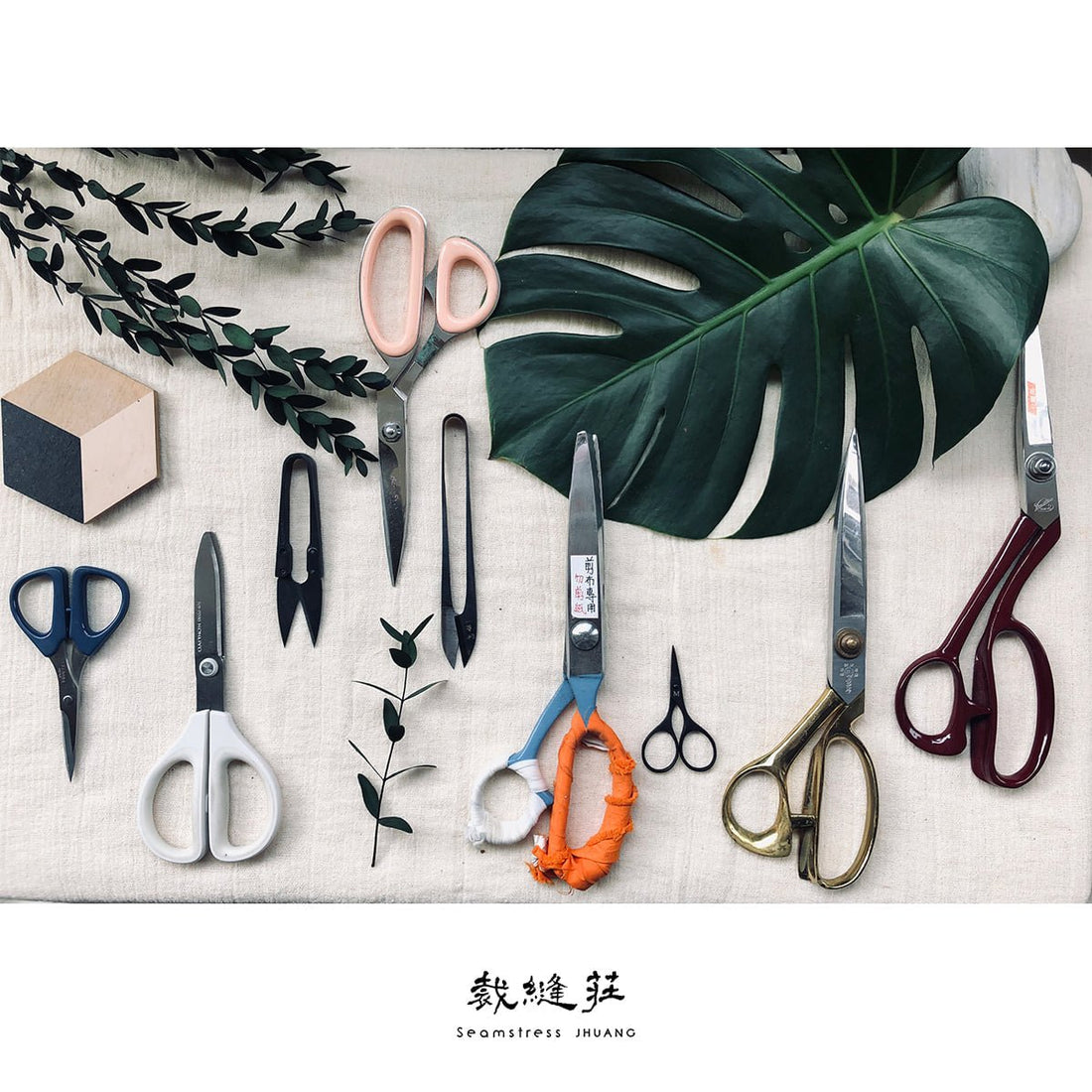
The Seamstress and Her Tools – The Scissors Edition
Share

When she first began learning sewing, she used the standard-issue scissors provided by her school. Everything felt unfamiliar and uncertain until she started preparing for the national certification exam. It was then that she gradually realized how the right tools could significantly enhance the learning experience.
Of course, at the beginning, she didn’t own many pairs of scissors, and finding the right one wasn’t easy. Along the way, there were some rather humorous incidents! (laughs)
One day, a friend of her mother’s brought back two finely crafted scissors from Germany. Through a video call and some photos, those German-made scissors gleamed brilliantly. At that time, she was drowning in the chaos of her graduate thesis project, and those scissors became a beacon of motivation amidst her exhaustion. She eagerly anticipated their arrival, her eyes filled with excitement.
When her mother finally visited her at the lab, bringing a variety of comfort gifts along with the long-awaited scissors, she was thrilled—until she held them in her hands. At that moment, she truly understood the meaning of "deceptive photography" (laughs).
After all that anticipation, the legendary German steel scissors turned out to be a pair of exquisitely crafted paper-cutting scissors. They couldn’t cut fabric at all and had cost a small fortune. Every time she recalls the incident, she still finds it utterly ridiculous.
Some people have their own little rituals when they work—whether it's the furniture they use, the tools they rely on, or even their working posture.
For example:
- Some people like to curl up entirely on their chairs, finding an unparalleled sense of security in that position.
- Others prefer to sit by a window when they write, brewing a cup of tea and watching the world outside unfold like a moving film, allowing their thoughts to flow effortlessly onto the page.
- Some name their vehicles with affectionate nicknames—perhaps something simple like "Little Black" or "Little White," or something completely random that just sticks. This is a way of fostering a personal connection, a kind of ritual.
She has a similar bond with her scissors.
"Little Pink Saburō" was her longest-serving pair, accompanying her through countless projects. It was her first encounter with the exquisite craftsmanship of Japan. Now, this trusty companion rests in a drawer at home.
She runs her fingers over another pair with dark red handles. Its silhouette resembles that of a crane, with elegantly curved handles designed specifically for cutting high-end silk fabrics without snagging or distorting the material. This pair was specially sourced from a shop in Hokkaido, where her family, with their patchy Japanese skills, communicated with the scissor master using a mix of gestures and broken phrases to acquire it.
Every pair of scissors carries its own soul and story.
To a master sharpener, scissors reveal their history—who applied too much force, leaving deep marks, and who was careless enough to let them fall.
She had always heard that one must never use a tailor’s scissors without permission. Master tailors rarely lend their scissors to others. It wasn’t until she owned a pair of gold-brass fabric shears that she truly understood—it wasn’t a matter of generosity or stinginess, but rather a deep, unwavering loyalty to a good tool. It was also a form of mutual admiration between craftsmanship and skill.
